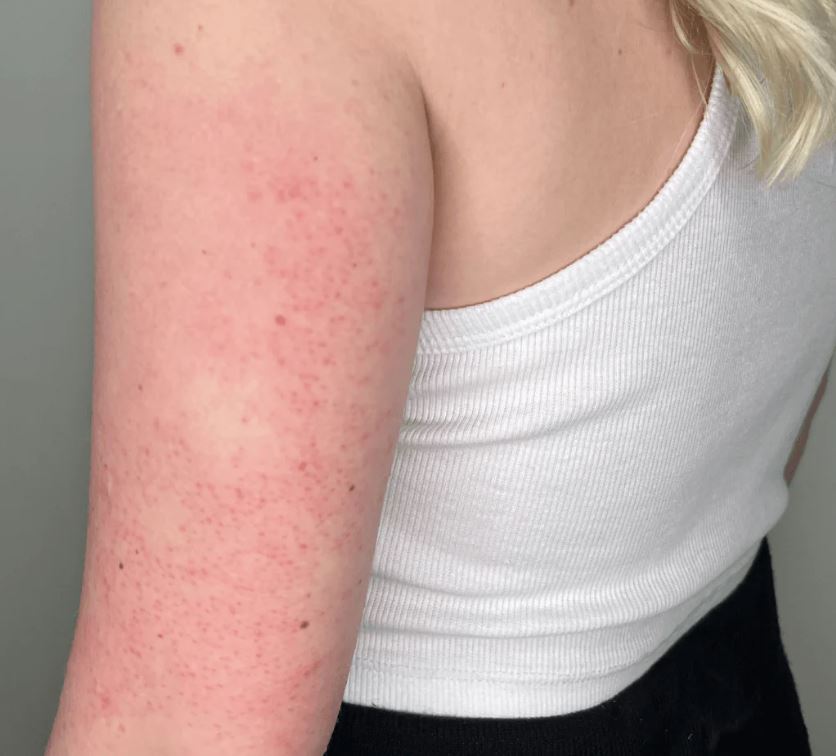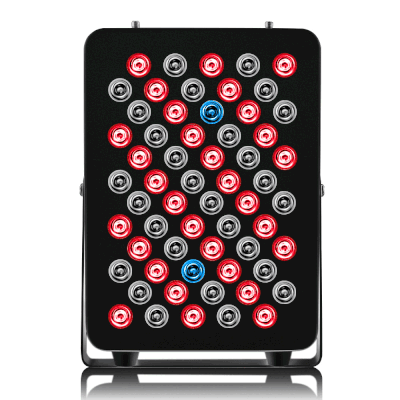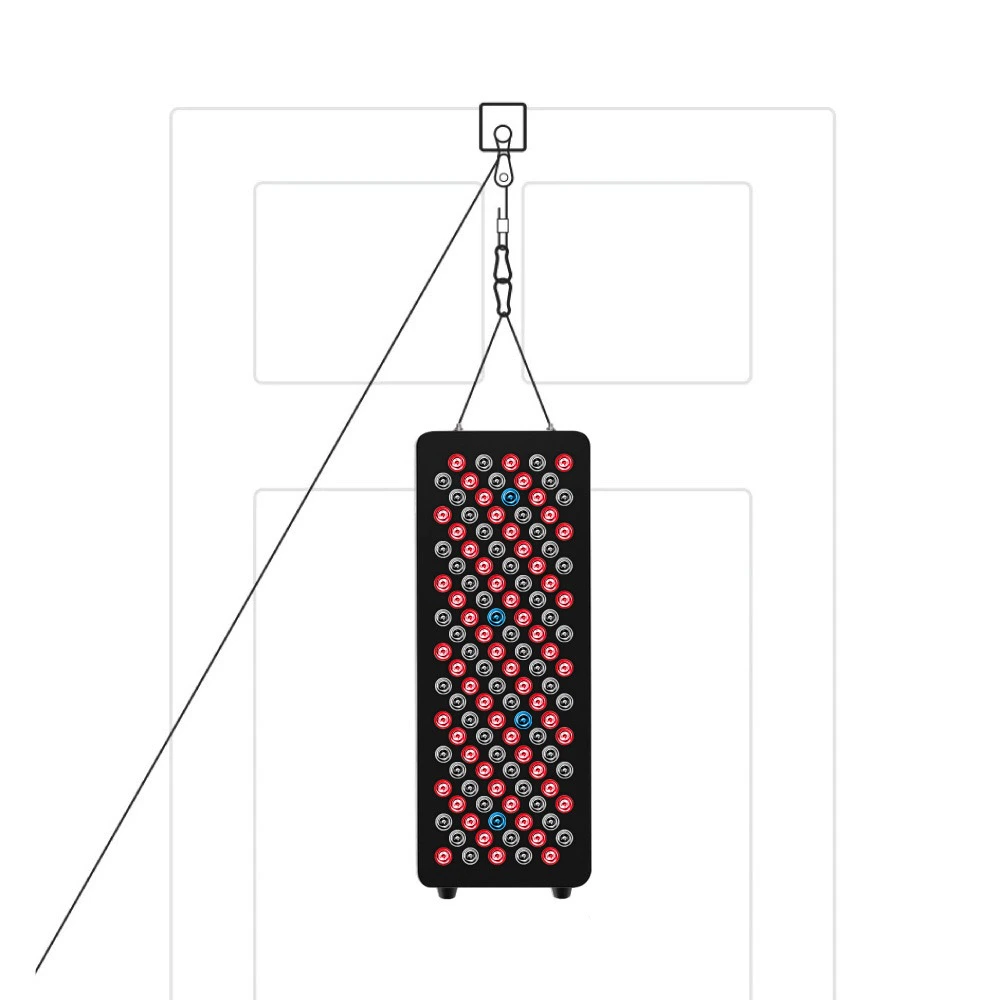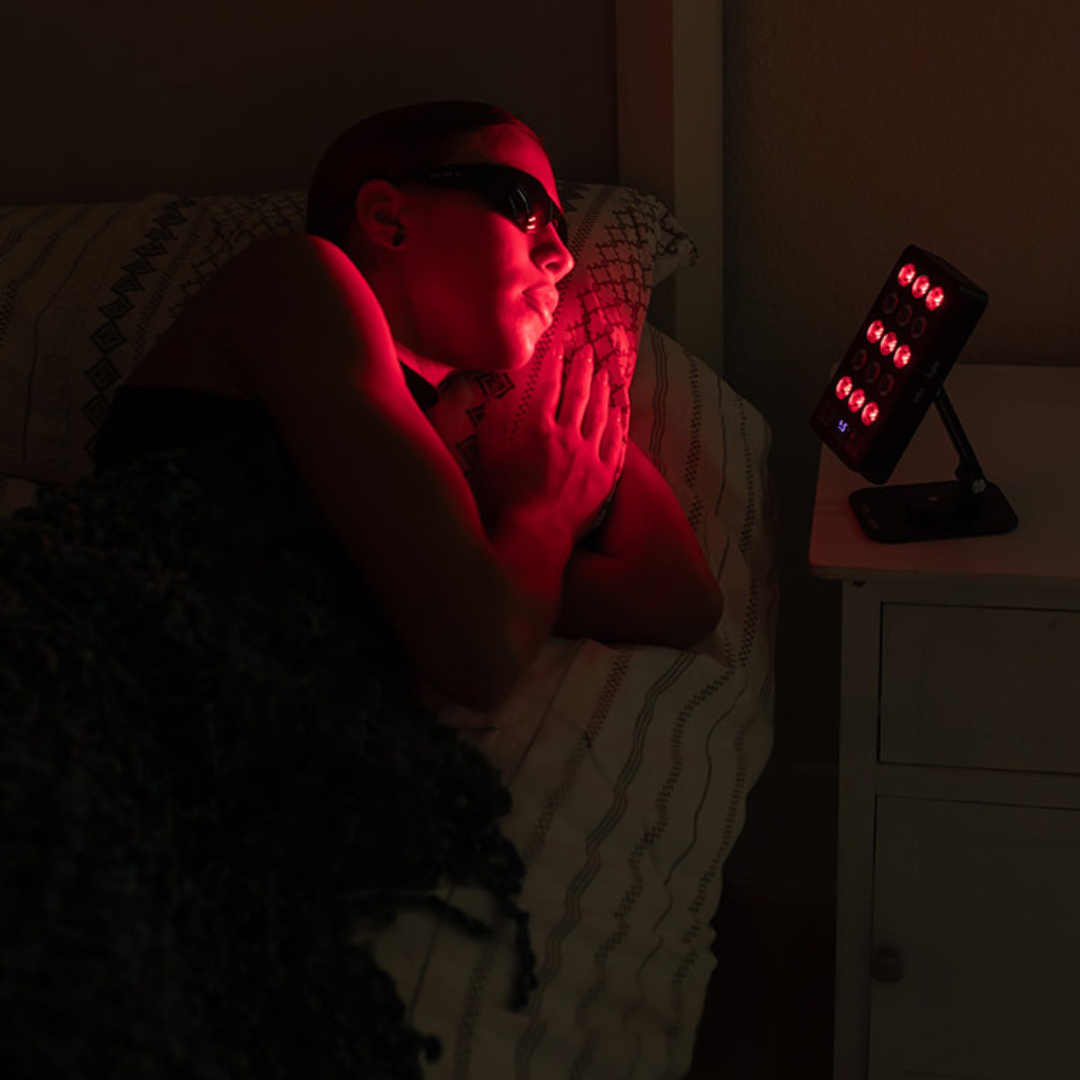![]() Free Shipping
Free Shipping ![]() Buy Now, Pay Later
Buy Now, Pay Later ![]() Eligible
Eligible
Does Red Light Therapy Work for Keratosis Pilaris (KP)? An Evidence-Based Guide

Taming the Bumps: Can Red Light Therapy Soothe Keratosis Pilaris?
If you’re one of the millions living with Keratosis Pilaris (KP), you know the struggle. Those tiny, rough bumps on the back of your arms, thighs, or cheeks can be a persistent and frustrating cosmetic concern. While not medically dangerous, KP can impact self-confidence and feel impossible to manage.
The beauty and wellness world is abuzz with red light therapy (RLT) as a solution for everything from wrinkles to pain relief. But does it hold water for a condition like KP? In this deep dive, we’ll explore the science, separate fact from fiction, and help you decide if investing in red light therapy is the right move for your skin.
First, What Exactly is Keratosis Pilaris (KP)?
Before we can treat it, we need to understand it. Keratosis Pilaris is a common, genetic skin condition caused by a buildup of keratin—a protective protein in our skin.
In simple terms: KP occurs when excess keratin forms hard plugs within hair follicles, trapping the emerging hair and creating those characteristic rough, sandpaper-like bumps. It’s often accompanied by redness or inflammation in the surrounding skin.
Common triggers and aggravators include:
- Dry Skin: Often worse in winter months or in dry climates.
- Genetics: It often runs in families.
- Hormonal Fluctuations: Can flare up during puberty, pregnancy, or menopause.
How Red Light Therapy Works: The Science of Light
Red Light Therapy, also known as Low-Level Laser Therapy (LLLT) or photobiomodulation, involves exposing the skin to specific wavelengths of red and near-infrared light. Unlike harsh UV rays, this light is safe and non-invasive.
The magic happens at a cellular level. When your skin cells absorb these specific light wavelengths, it supercharges the mitochondria—the “powerhouse” of the cell.
The result? A cascade of beneficial effects:
- Boosted Cellular Energy (ATP Production): Cells have more energy to repair themselves and function optimally.
- Reduced Inflammation: RLT calms the immune response, reducing swelling, redness, and tenderness.
- Stimulated Collagen Production: The therapy encourages the production of new collagen, which is vital for skin structure and healing.
- Improved Blood Circulation: Enhanced blood flow brings more oxygen and nutrients to the treated area.
The Connection: Can RLT Specifically Help KP Symptoms?
Now for the million-dollar question. Red light therapy is not a direct “cure” for the keratin plugs themselves. However, it can be a powerful tool for managing the most frustrating symptoms of KP. Here’s how:
1. Calming Inflammation and Redness
The red, inflamed skin around the KP bumps is a major source of concern. RLT’s potent anti-inflammatory effects can significantly calm this background redness, making the bumps less noticeable and the overall skin tone more even.
2. Supporting Skin Healing and Repair
The rough texture of KP is often exacerbated by scratching or picking. By boosting cellular energy and collagen, RLT can accelerate the skin’s natural healing process, helping to repair the skin barrier and improve overall texture over time.
3. Enhancing the Efficacy of Your Topical Routine
RLT can be a fantastic complementary treatment. By reducing inflammation and improving skin health, it can potentially make your topical treatments (like salicylic acid, urea, or retinoids) more effective and less irritating.
Expert Insight: “While more targeted studies on RLT for KP are needed, the established biological effects of photobiomodulation—namely reducing inflammation and promoting tissue repair—align perfectly with the goals of managing this condition. It’s a supportive therapy that addresses the root inflammatory component, not just the keratin buildup.” – Paraphrased from dermatological research on photobiomodulation.
Red Light Therapy vs. Other KP Treatments
How does RLT stack up against traditional KP management? Here’s a quick comparison:
| Treatment Method | How It Works | Pros | Cons |
|---|---|---|---|
| Red Light Therapy | Reduces inflammation, promotes healing & collagen at a cellular level. | Non-invasive, painless, minimal side effects, improves overall skin health. | Not a direct exfoliant; requires consistency; can be a financial investment. |
| Chemical Exfoliants (AHAs/BHAs) | Dissolves the “glue” holding dead skin cells together to unclog follicles. | Directly targets keratin plugs; proven effectiveness; widely available. | Can cause irritation, dryness, and sun sensitivity. |
| Moisturizers & Emollients | Hydrates skin and helps soften keratin plugs. | Essential for all KP routines; gentle; prevents dryness. | Does not address inflammation or redness on its own. |
| Physical Exfoliation | Manually sloughs off dead skin cells from the surface. | Provides immediate (but temporary) smoothness. | Can be too harsh, worsening inflammation and redness. |
What to Realistically Expect: A Roadmap for Your RLT Journey
If you decide to try red light therapy for your KP, it’s crucial to have realistic expectations.
- It’s a Marathon, Not a Sprint: You will not see results overnight. Consistency is key.
- Commitment is Required: Most users see initial improvements in redness and texture after 4-8 weeks of consistent use (typically 3-5 sessions per week).
- It’s a Management Tool, Not a Cure: RLT can help you manage KP effectively, but due to its genetic nature, the condition will likely return if you stop treatment.
- Combination is Key: For best results, pair your RLT sessions with a solid skincare routine of gentle exfoliation and heavy-duty moisturization.
How to Use Red Light Therapy for KP at Home
The rise of at-home panels and devices has made RLT more accessible than ever.
- Choose Your Device: Look for a reputable device that emits wavelengths in the red (630-670nm) and/or near-infrared (810-850nm) spectrum.
- Prepare Your Skin: Ensure the treatment area is clean, dry, and free of any products.
- Consistent Sessions: Position the device according to the manufacturer’s instructions, typically 6-12 inches from the skin. Start with sessions of 10-15 minutes on the affected areas (like upper arms, thighs).
- Follow with Skincare: After your session, apply your favorite KP-friendly moisturizer to lock in hydration. Your skin may be more receptive to active ingredients post-treatment.
VELLGUS Elite V2
THE #1 RATED RED LIGHT DEVICE
VELLGUS pro V2
THE #1 RATED FULL BODY RED LIGHT DEVICE
The Final Verdict
So, does red light therapy work for Keratosis Pilaris?
The evidence suggests that yes, it can be an effective part of a comprehensive KP management plan. While it won’t magically dissolve the keratin plugs, its powerful ability to reduce inflammation, calm redness, and improve overall skin health and healing directly addresses some of the most persistent symptoms of KP.
If you’ve tried every cream and scrub with lackluster results, red light therapy offers a gentle, non-invasive, and scientifically-backed approach to achieving calmer, smoother, and healthier-looking skin.
Disclaimer: This article is for informational purposes only and does not constitute medical advice. Always consult with a dermatologist or healthcare provider before starting any new treatment for a skin condition.








